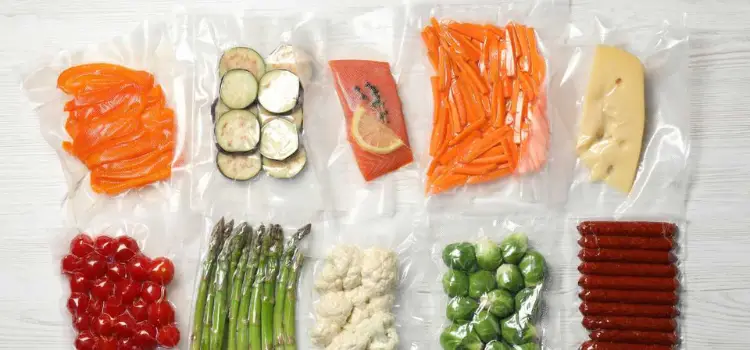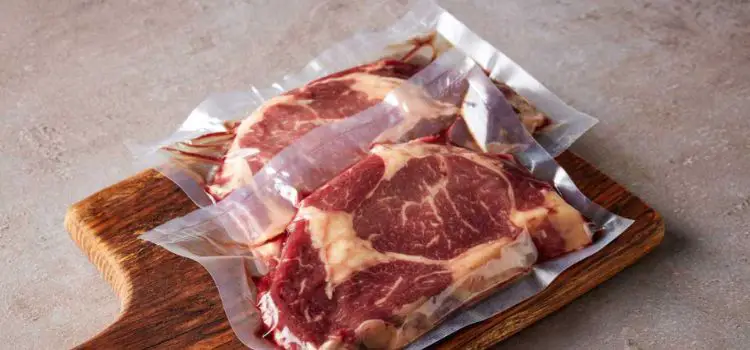As an Amazon Associate, I earn from qualifying purchases

Vacuum sealing is a popular method for preserving food, known for its ability to extend shelf life by removing air and reducing the risk of spoilage. But when it comes to mold, a common concern is whether this pesky fungus can still find a way to thrive inside a vacuum-sealed bag. Mold is notorious for ruining food, and understanding its relationship with vacuum sealing is crucial for anyone looking to keep their food fresh and safe.
Mold growth is typically associated with moisture, warmth, and the presence of organic material. These conditions are often found in improperly stored food, leading to the fuzzy, sometimes colorful patches that signal spoilage. But does vacuum sealing effectively eliminate the risk of mold, or are there limitations to this preservation method? This article explores the conditions required for mold growth, the effectiveness of vacuum sealing in preventing it, and practical tips to ensure your vacuum-sealed foods remain mold-free.
Conditions Required for Mold Growth
To understand how vacuum sealing impacts mold growth, it’s essential to first grasp the conditions that mold needs to thrive. Mold spores are virtually everywhere, but they require specific conditions to grow and multiply.
- Moisture Presence and Its Role in Mold Development: Moisture is a critical factor for mold growth. Mold spores need a damp environment to germinate and spread. This is why foods with high moisture content, like fruits and bread, are more susceptible to mold.
- Temperature Ranges Conducive to Mold Growth: Mold grows best in warm, humid conditions, typically between 77°F and 86°F (25°C to 30°C). However, some mold species can grow at lower temperatures, which is why refrigeration alone doesn’t always prevent mold.
- Availability of Organic Matter for Mold to Thrive: Mold feeds on organic matter, breaking it down as it grows. This includes a wide range of foods, from fresh produce to cooked meals. The presence of organic material is a non-negotiable requirement for mold growth.
Effectiveness of Vacuum Sealing in Preventing Mold
Vacuum sealing is designed to combat some of the key conditions that promote mold growth, primarily by removing air from the packaging.
- How Vacuum Sealing Reduces Oxygen Availability: Mold requires oxygen to grow. By vacuum sealing, you significantly reduce the amount of air—and thus oxygen—around the food. This creates an environment that is less conducive to mold growth.
- Impact of Vacuum Sealing on Moisture Levels: While vacuum sealing doesn’t remove moisture from the food itself, it does help prevent additional moisture from entering the packaging. This can help maintain the food’s original moisture level, reducing the risk of mold.
- Comparison with Other Preservation Methods: Compared to methods like refrigeration or simple airtight containers, vacuum sealing is more effective at reducing oxygen exposure. However, it is often used in conjunction with refrigeration or freezing for optimal results.
Limitations of Vacuum Sealing

Despite its benefits, vacuum sealing is not foolproof. There are scenarios where it may not completely prevent mold growth.
- Scenarios Where Vacuum Sealing May Not Prevent Mold: If the food is already contaminated with mold spores before sealing, vacuum sealing alone may not stop mold from developing. Additionally, if the seal is compromised, air can enter, allowing mold to grow.
- Potential for Mold Growth from Improperly Sealed Bags: A proper seal is crucial. If the bag is not sealed correctly, air and moisture can seep in, creating an environment where mold can thrive.
- Importance of Initial Food Quality and Cleanliness: The quality and cleanliness of the food before sealing play a significant role. If the food is already starting to spoil or is contaminated with mold spores, vacuum sealing will not reverse this process.
Tips for Preventing Mold in Vacuum-Sealed Bags
To maximize the effectiveness of vacuum sealing and prevent mold, consider these practical tips:
- Ensuring Bags Are Properly Sealed and Airtight: Always check the seal after vacuuming. A double seal can provide extra security. Ensure there are no wrinkles or debris in the seal area that could compromise the airtightness.
- Storing Vacuum-Sealed Items at Appropriate Temperatures: While vacuum sealing reduces oxygen, storing the sealed bags in a cool, dry place further inhibits mold growth. For perishable items, refrigeration or freezing is recommended.
- Pre-cleaning and Drying Food Before Sealing: Clean and dry food thoroughly before sealing to remove any existing mold spores and reduce moisture content. This step is crucial for foods with high moisture levels.
Conclusion
Vacuum sealing is a powerful tool in the fight against mold, primarily by reducing oxygen exposure and maintaining moisture levels. However, it is not a standalone solution. Proper sealing techniques, combined with appropriate storage conditions and initial food quality, are essential to prevent mold growth effectively.
In summary, while vacuum sealing significantly reduces the risk of mold, it is most effective when used as part of a broader food preservation strategy. By understanding the conditions mold needs to grow and taking proactive steps to address them, you can keep your vacuum-sealed foods fresh, safe, and mold-free.
FAQ
Can mold grow in a vacuum bag?
Mold can grow in a vacuum bag if conditions allow, such as if there is residual moisture or if the food was contaminated before sealing. While vacuum sealing reduces oxygen, a critical factor for mold growth, it doesn’t eliminate mold spores already present in the food.
Can bacteria grow in vacuum seal bags?
Yes, bacteria can grow in vacuum seal bags, particularly anaerobic bacteria that thrive without oxygen. Vacuum sealing limits oxygen but doesn’t stop bacterial growth if the food is contaminated. Proper food hygiene and storing at appropriate temperatures are essential to minimize bacterial risk.
Does vacuum sealing food prevent mold?
Vacuum sealing helps prevent mold by reducing oxygen exposure, essential for mold growth. However, it doesn’t eliminate existing mold spores. For optimal protection, ensure food is clean, dry, and stored correctly after sealing, and use refrigeration or freezing for perishable items.
As an Amazon Associate, I earn from qualifying purchases